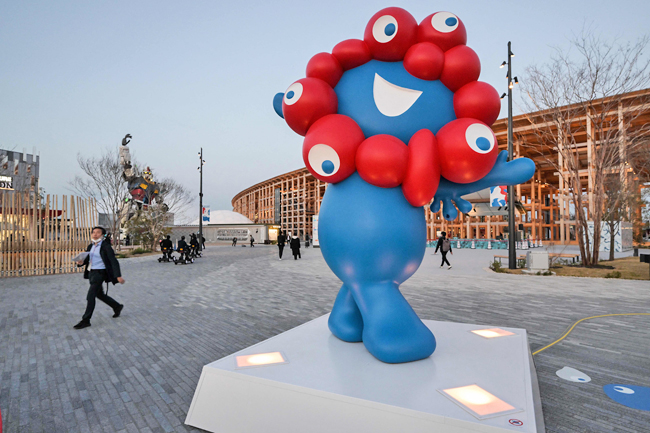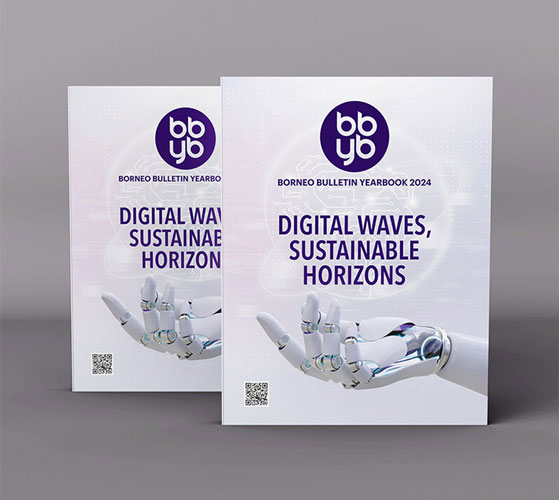OSAKA (AFP) – A multi-eyed mascot, a vast wooden Grand Ring, 160 countries and regions strutting their stuff, and robots and sushi galore: Expo 2025 begins tomorrow in Osaka, Japan.
World Expo is held every five years in different global locations. Here are five things to know about this event, which runs until mid-October.
Encircling dozens of national pavilions is the Grand Ring – recognised by Guinness World Records as the planet’s largest wooden architectural structure.
Architect Sou Fujimoto says his edifice, which cost JPY34.4 billion (USD230 million) and has a circumference of two kilometres, is a symbol of unity.
Latticed beams hold up a sloping roof, 20 metres tall at its highest point, which doubles as a ‘skywalk’.
Fujimoto told AFP that he chose wood as a sustainable material.
But Japanese media say just 12.5 per cent of the temporary structure will be reused – down from the original plan of 25 per cent.
Expo 2025’s mascot Myaku-Myaku is red and blue with five googly eyes dotted around its smiling mouth – and one more eye on its bobbly red tail.
It is “a mysterious creature born from the fusion of cells and water”, according to event organisers.


“Basking in the sunlight is the source of its energy” and sometimes the shape-shifting Myaku-Myaku “forgets its original form”, they said.
Despite puzzled reactions when it was unveiled, the mascot has since become popular among social media users in Japan, and has even inspired fan art.
This is Osaka’s second World Expo after the 1970 edition that was attended by 64 million people, a record until Shanghai in 2010.
At Expo 1970, the first film in IMAX format was shown and visitors admired rocks brought back from the Moon.
But this time ticket sales have been slow and many locals are unimpressed by the construction being 27 per cent over budget.
Organisers want to sell 23 million tickets overall, and as of last week, 8.7 million had been sold. To encourage visitors, same-day admission will now be possible.
Japan’s pavilion will show off a meteorite from Mars discovered in Antarctica by Japanese researchers – the first time it will be on display to the public.
Hungry visitors can stop by Japan’s longest sushi conveyor belt before checking out cutting-edge robots, drone shows and a beating ‘heart’ grown from stem cells.
The United States pavilion, themed ‘America the Beautiful’, has an LED-screen simulator of a NASA rocket launch.


